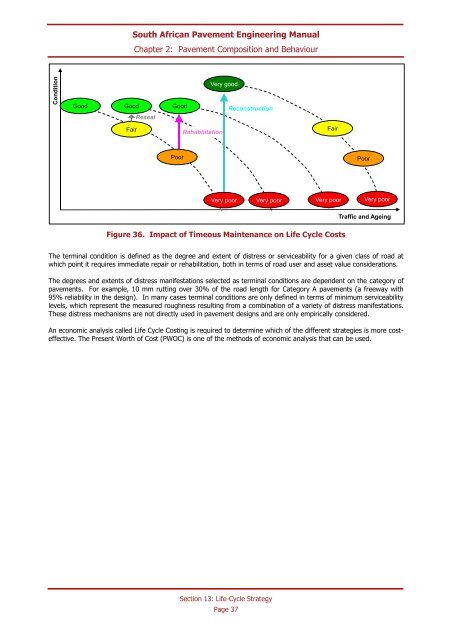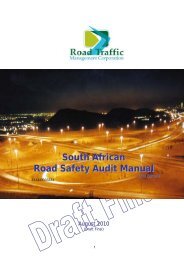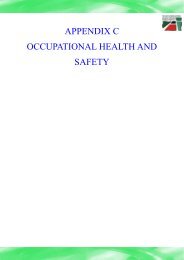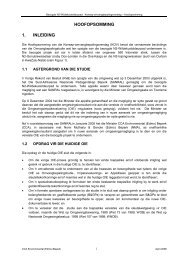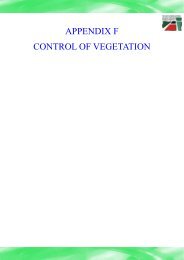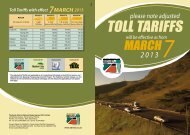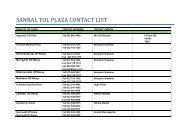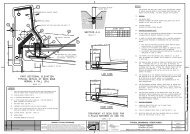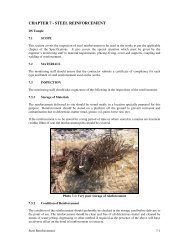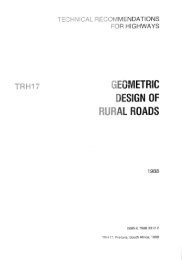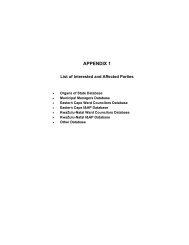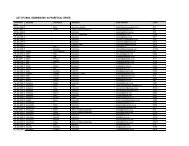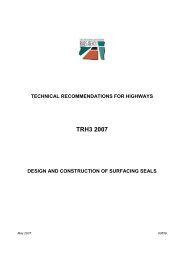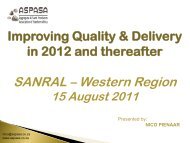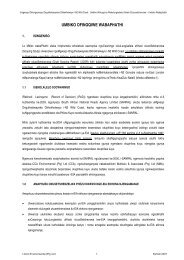SAPEM Chapter 2 - Sanral
SAPEM Chapter 2 - Sanral
SAPEM Chapter 2 - Sanral
You also want an ePaper? Increase the reach of your titles
YUMPU automatically turns print PDFs into web optimized ePapers that Google loves.
Condition<br />
South African Pavement Engineering Manual<br />
<strong>Chapter</strong> 2: Pavement Composition and Behaviour<br />
Very good<br />
Good<br />
Good<br />
Reseal<br />
Good<br />
Reconstruction<br />
Fair<br />
Rehabilitation<br />
Fair<br />
Poor<br />
Poor<br />
Very poor<br />
Very poor<br />
Very poor<br />
Very poor<br />
Traffic and Ageing<br />
Figure 36. Impact of Timeous Maintenance on Life Cycle Costs<br />
The terminal condition is defined as the degree and extent of distress or serviceability for a given class of road at<br />
which point it requires immediate repair or rehabilitation, both in terms of road user and asset value considerations.<br />
The degrees and extents of distress manifestations selected as terminal conditions are dependent on the category of<br />
pavements. For example, 10 mm rutting over 30% of the road length for Category A pavements (a freeway with<br />
95% reliability in the design). In many cases terminal conditions are only defined in terms of minimum serviceability<br />
levels, which represent the measured roughness resulting from a combination of a variety of distress manifestations.<br />
These distress mechanisms are not directly used in pavement designs and are only empirically considered.<br />
An economic analysis called Life Cycle Costing is required to determine which of the different strategies is more costeffective.<br />
The Present Worth of Cost (PWOC) is one of the methods of economic analysis that can be used.<br />
Section 13: Life-Cycle Strategy<br />
Page 37


